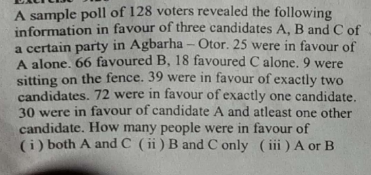
Question and Answers Forum
AllQuestion and Answers: Page 527












Pg 522 Pg 523 Pg 524 Pg 525 Pg 526 Pg 527 Pg 528 Pg 529 Pg 530 Pg 531
|
Question and Answers Forum |
AllQuestion and Answers: Page 527 |
| (√(1−((x+1)/x))) + ∣x−3∣ ≥ 0 |

|
| lim_(x→0) (((sin 2x−2tan x)^2 +(1−cos 2x)^3 )/(tan^7 6x +sin^6 x))=? |

|

|

|
| Solve for x log _(log _6 (x−1)) (64) = 6 |
| Ω = ∫_0 ^( 1) (( ln (−ln (x)))/(1+x)) dx =^? ((−1)/2) ln^( 2) (2) |

|
| How many ways can 50 people be divided into 3 groups, so that each group contains members equal to a prime number? |
| Ω=∫_0 ^1 x^(n−1) ln(1−x)dx=??? n≥1 |

|
| there are even number divided all odd number what is the number ? |
| ∫_(−2) ^( 2) x^3 cos((x/2)) (√(4−x^2 )) dx |

|

|

|

|
| ∫_o ^(+oo) ((tlnt)/((1+t)^2 )) etudier la convergence |

|

|
| (1/(1∙2))+(1/(3∙4))+(1/(5∙6))+...+(1/(39∙40))=? |
| logx_(ab) =? if logx_a =30 andlogx_b =70 |
| lim_(x→(π/2)) ((π/(cos x)) −2x tan x )=? |
| lim_(x→∞) ( sin (√(x^2 +1))−sin (√(x^2 −1)) )=? |
| In the given equation below , applying the formula for the derivative of inverse trigonometric functions , what is the ′′u ′′ from the given function. y = cosec^(−1) [ sin (((1+sin x)/(cos x)))] |
Pg 522 Pg 523 Pg 524 Pg 525 Pg 526 Pg 527 Pg 528 Pg 529 Pg 530 Pg 531 |